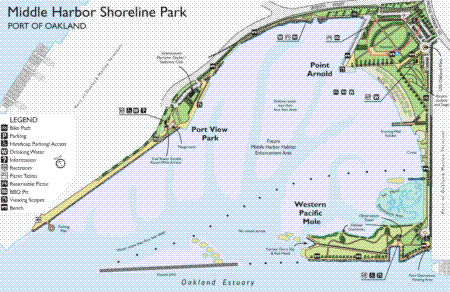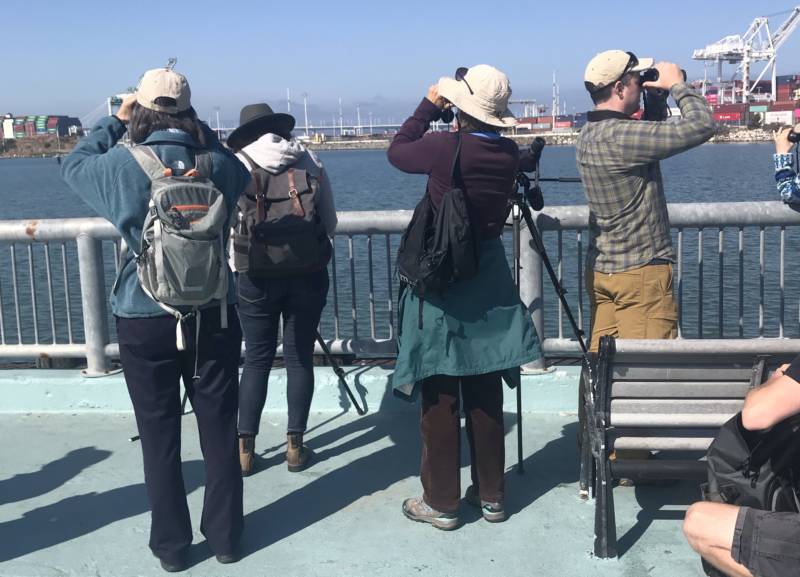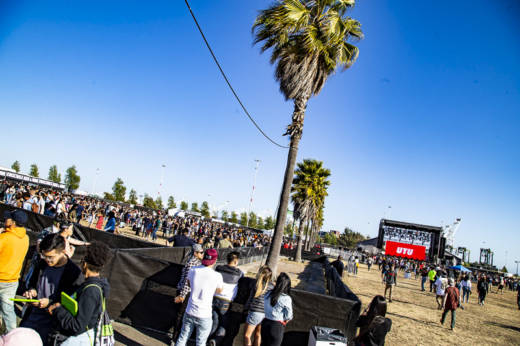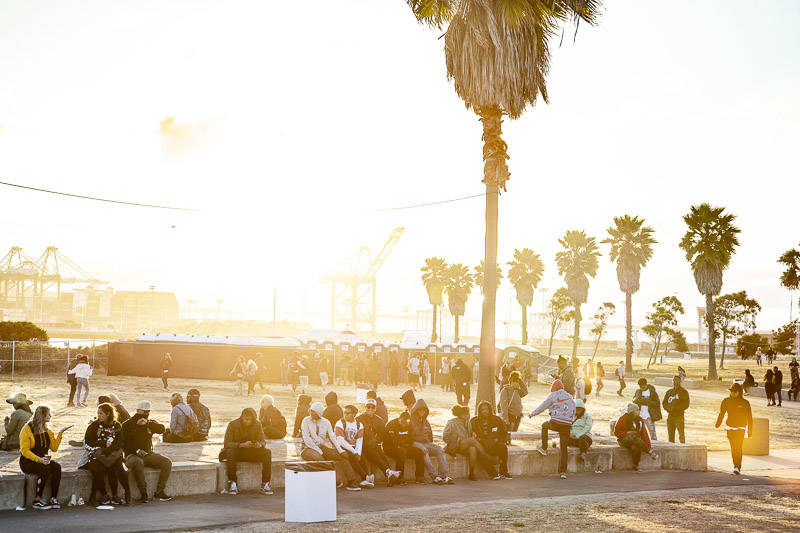Nestled along the southwestern-most corner of Oakland is Middle Harbor Shoreline Park, a crescent-shaped greenbelt and public beach stretched beneath Port of Oakland cranes.
The remote park is Megan Jankowski’s “patch,” birdwatcher lingo for a site of regular study. Dramatically set against the San Francisco skyline, sandbars and rocks within Middle Harbor’s shallow shore water provide roosting and feeding terrain for myriad species of birds. On Sunday, Jankowski convened a dozen or so binocular-toting birders at the mast of the USS Oakland, which greets visitors in the parking lot, to describe the site’s wintering waterfowl and shorebirds.

Jankowski, 37, who works in real estate, also noted that the park hosted Treasure Island Music Festival a week prior, and that a smaller event featuring DJs and a jump-house was scheduled for that afternoon. “If you don’t like electronic music, you might be annoyed,” she told the crowd.
A birder carrying a tripod-mounted telescope asked Jankowski—who records avian activity at the park twice a month as part of her “master birder” training through the Golden Gate Audubon Society—a question she’s lately asked herself: “How do the Ruddy Ducks feel about electronic music?”
Jankowski smiled, “We’ll see.” Then she recognized a passing Anna’s Hummingbird solely by the squeaking sound of its tail-feathers at the bottom of a dive, the first of 38 species observed and identified by the group that afternoon.

In 2018, the Port of Oakland-owned and operated park hosted three music festivals attended by more than 4,000 people; Treasure Island and Blurry Vision each drew more than 10,000 people over both festivals’ two-day runs. Jankowski is among the community members and conservationists concerned about the events’ impact on the park wildlife. She worries that the increasing rate and size of the festivals, and lack of environmentally-conscious conditions, runs against the port’s efforts to improve the habitat for birds, including endangered Least Terns and threatened Snowy Plovers.



